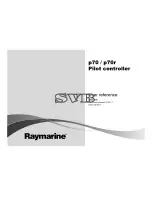1-9
Installing the 300L
Input levels between -1.5dBu and -2.9dBu will reference to 0 on the LARC
meters. You will find your own region of optimization.
On the output side, if +11dBu isn’t quite enough oomph! for the return inputs
(which is rarely the case) you may need to crank up the outputs. If you have
attenuated the inputs, as in the above example, the output will not be at unity gain
so you will have to boost the output sliders by the same amount. Grab each slider
individually and match the outputs.
A note on metering reverberation programs
Most Setups have the meters set for EFX-OUT. What we have described above
is getting the input and outputs “environmentally” matched.
As you start running reverb programs, you will see a natural attenuation on the
meters. This is perfectly normal. If the LARC overload LEDs do light up, DSP
overload is occurring. This is usually linked to someone’s “aggressive analog
behavior”, but there may be other times when an effect running in a delay
program has too much feedback and cross-feedback. A common pre-mastering
mistake is to run close to the edge going into an EQ process before going digitally
into a DAT. Boosting high or low frequencies is likely to overload the DSP output.
Be aware!
Summary of Contents for 300L -
Page 1: ...Digital Effects LARC Interface Owner s Manual 300L...
Page 8: ...1 1 Installing the 300L 1 Installing the 300L...
Page 22: ...2 1 System Overview 2 System Overview...
Page 30: ...3 1 System Operation 3 System Operation...
Page 63: ...Lexicon 300L Owner s Manual 3 34...
Page 64: ...4 1 The Algorithms and their Parameters 4 The Algorithms and their Parameters...
Page 101: ...Lexicon 300L Owner s Manual 4 38...
Page 102: ...5 1 The Presets 5 The Presets...
Page 131: ...5 30 Lexicon 300L Owner s Manual...
Page 132: ...6 1 Time Code Operation 6 Time Code Operation...
Page 142: ...7 1 MIDI Operation 7 MIDI Operation...
Page 152: ...8 1 Troubleshooting 8 Troubleshooting...


















